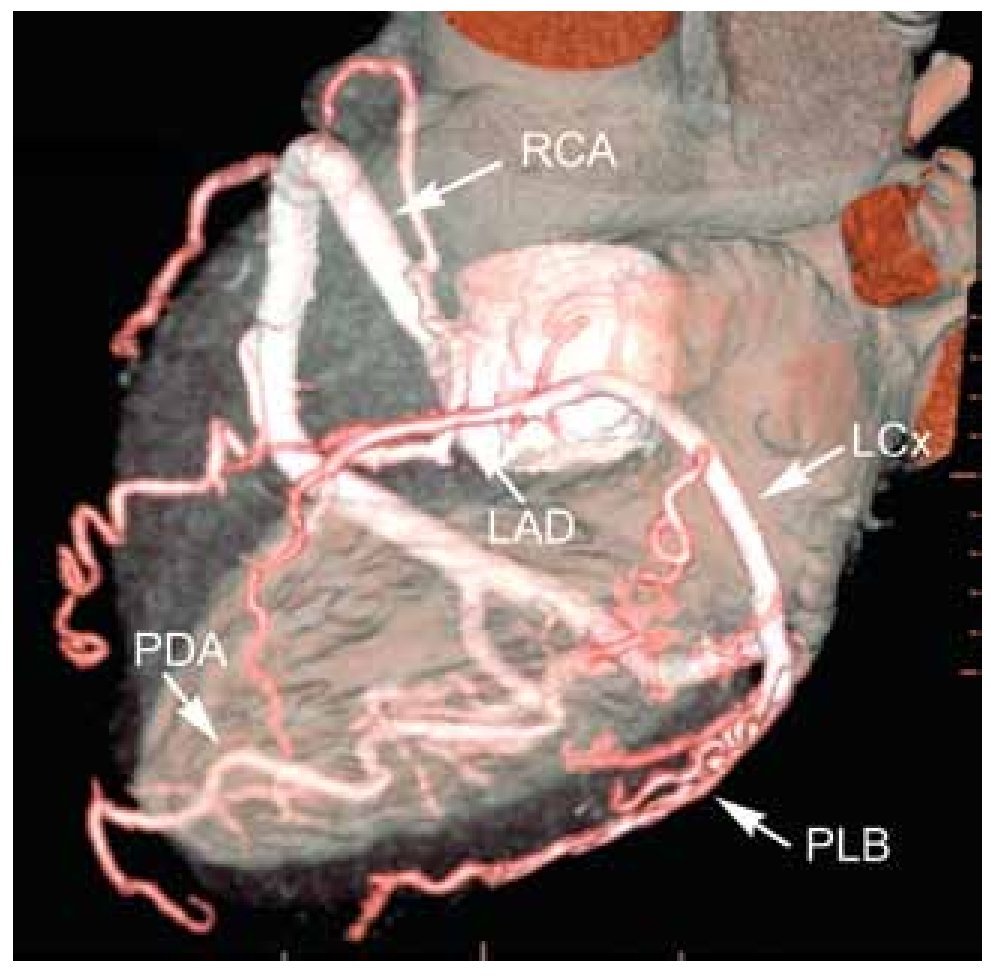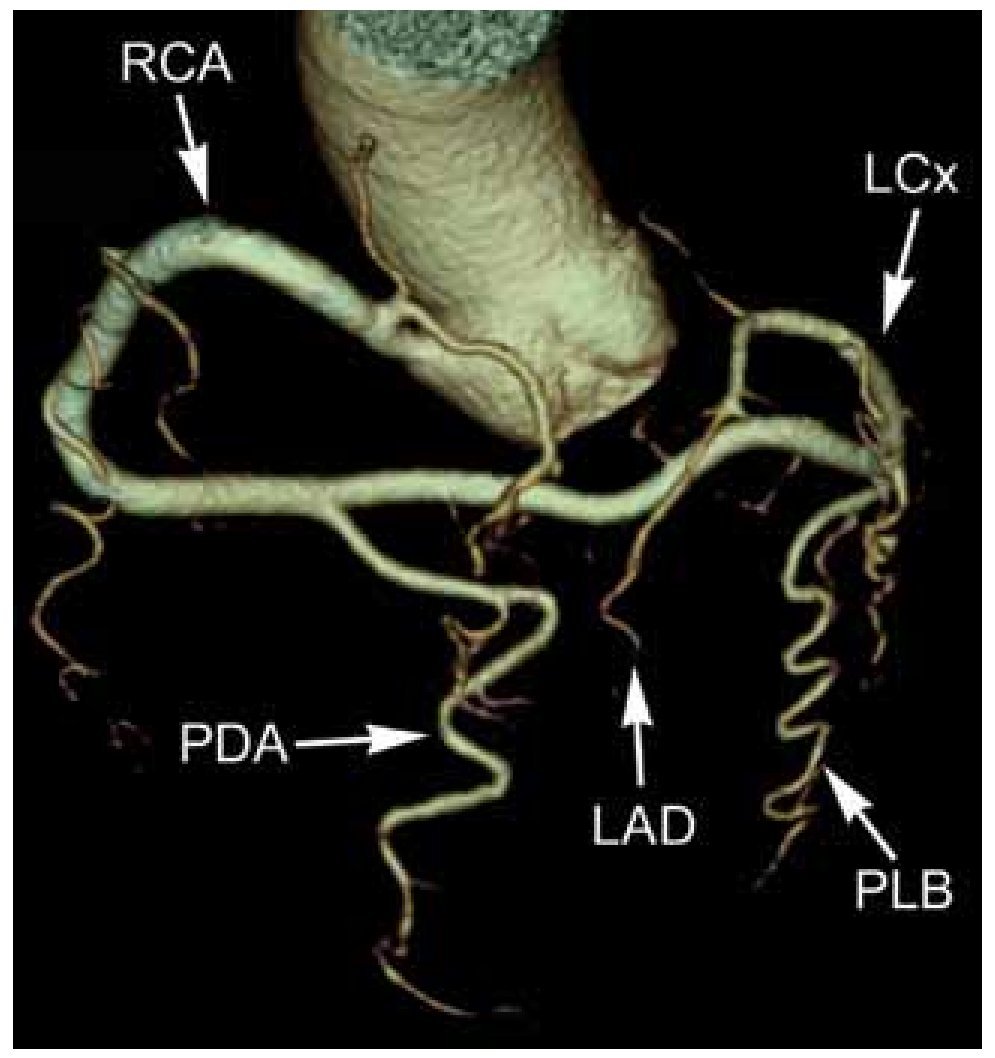Coronary anomalies are rare, with a reported prevalence of 1.3% among patients who undergo coronary angiography. The great majority of coronary artery anomalies are incidental findings and are not clinically significant, but in some cases, may be responsible for angina, syncope, arrhythmias or even sudden death. In the following case, we describe coronary CT angiography findings of one of the rarest coronary anomalies. Lipton R-I type single right coronary artery has only been previously reported in very few occasions and has been seen in only 0.0007% of the population.
Las anomalías congénitas de las arterias coronarias son raras, con una prevalencia estimada de 1.3% en pacientes sometidos a angiografía coronaria. la gran mayoría de estas anomalías no son clínicamente significativas, aunque en algunos casos, pueden producir angina, síncope, arritmias e incluso muerte súbita. En el siguiente caso, describimos mediante tomografía computarizada multicorte, una de las anomalías congénitas de las arterias coronarias más raras. La arteria coronaria derecha única tipo R-I de Lipton, de la que sólo se han reportado muy pocos casos y su prevalencia se estima en 0.0007%.
A 68-yo woman with systemic arterial hypertension requested medical attention because of atypical chest pain. Physical examination, cardiac biomarkers and 12-lead electrocardiogram were unremarkable. A treadmill stress test showed monomorphic ventricular extrasystolia in association with atypical chest pain during early recovery phase. Finally, a coronary CT angiography performed on a 64-slice scanner, showed absence of the left coronary artery and demonstrated a single coronary artery arising from the right coronary sinus of Valsalva. The right coronary artery continued its course as a left circumflex artery and ended as a left anterior descending artery (Figures 1 and 2). This unusual case of a single coronary artery anomaly (SCA) corresponds to a Lipton R-I type.1 No plaques were noted and the Calcium score was 0 AU. Conservative treatment was recommended and she has being doing well during a 2-year follow-up.
Figure 1. Volume-rendered image in oblique cranial view depicting the single right coronary artery (RCA) arising normally. After branching off the posterior descending artery (PDA), the RCA continues through the left atrioventricular groove as a left circumflex artery (LCx), giving off the posterolateral left ventricular branches (PLB) and ending as the left anterior descending artery (LAD).
Figure 2. Segmented volume-rendered reconstruction of the coronary artery tree showing the single coronary artery ostia originating from the right sinus of Valsalva.
One of the rarest coronary artery anomalies is the SCA R-I type of which very few cases have been reported (in a very large series, only one was found in 126 595 patients).2,3 Coronary anomalies may cause reduced regional myocardial blood flow particularly in the presence of interarterial courses or vasospasm but, in the present case, no atherosclerosis was found and the coronary course was sought to be hemodynamically benign. Even though, we encourage close follow up, as obstruction of a SCA could be catastrophic. Nowadays, MDCT allows non-invasive, multiplanar and accurate assessment of coronary arteries and should be coronary anomalies diagnostic reference method.
Conflict of interest
Dr. Eric Kimura-Hayama is Advisor of the Imaging Solutions Advisory Board (ISAB) of Covidien. The rest of coauthors have no conflict of interest.
Received on September 9, 2011; accepted on December 9, 2011.
Corresponding author:
Eric Kimura-Hayama, MD.
Juan Badiano # 1, Sección XVI, Tlalpan.
Z.P. 14080. Mexico City. Mexico.
Telephone: (+52) 55 5573 2911. Fax: (+52) 55 5550 1620.
E-mail address: erickimura@ctcardiomexico.com







